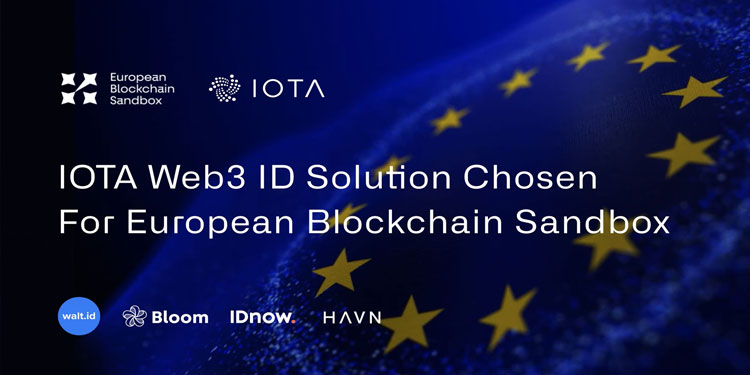The European Commission has announced the selection of Iota’s Web3 Identification solution for the latest edition of its European Blockchain Sandbox initiative (EBSI). On June 13, the European Commission revealed the participants for the second cohort of the EBSI, among which Iota, an open-source distributed ledger and cryptocurrency ecosystem, was prominently featured.
Milestone for Iota’s Identity Solution
Iota’s selection marks a significant milestone for its Web3 ID solution, which was developed in collaboration with Walt.id, IDnow, Bloom Wallet, and HAVN. The selection is expected to facilitate regulatory discussions concerning Know Your Customer (KYC) and privacy in a Web3 environment. This comes at a crucial time as regulators are increasingly focusing on their approach to decentralized finance (DeFi).
European Blockchain Sandbox Initiative
Launched by the European Commission in 2023, the EBSI serves as a testing ground for distributed ledger technology (DLT) solutions across multiple industries. Each cohort, limited to no more than 20 projects, provides a controlled environment for testing and validation, offering opportunities for direct engagement with regulators from across the European Union.
Selected Projects and Use Cases
Alongside Iota, other selected projects include RealEstate.Exchange (REX) DigiShares, the documents and business-focused blockchain DoxyChain, the smart contract and blockchain security analysis project Hacken, and the artificial intelligence-centric knowledge infrastructure project Origintrail. These projects, together with Iota, will explore innovative DLT applications within the sandbox.
Iota’s Web3 ID Solution
Iota’s Web3 ID solution aims to transform the traditional KYC processes, which are often plagued by inefficiencies, high costs, and privacy concerns. The proposed solution involves implementing a reusable KYC system via DLT and tokenization to enhance security and user control over personal data. This process begins with remote identification conducted by IDnow, ensuring compliance with EU Anti-Money Laundering (AML) and KYC regulations.
Tokenized Digital Identity
In Iota’s Web3 ID solution, the verified identity is tokenized and stored in the user’s wallet as a soulbound token. This token can be used across various Web3 applications to verify identity without exposing personal information, providing a more secure and user-friendly alternative to traditional methods.
EU’s Digital ID Initiative
This development aligns with the European Union’s active pursuit of a digital ID scheme. On May 21, the EU updated its European Digital Identity (EUDI) regulation, initially released in February 2023, with full implementation requirements set for 2026. The regulation mandates that member states provide at least one EU digital identity wallet to all citizens and residents. These digital ID wallets are intended for electronically signing and storing documents, ranging from university diplomas to train tickets, representing the next evolution in how European citizens live and work.
Future Prospects and Trends
While the EU focuses on digital ID, other global initiatives are also emerging. For instance, The Open Network blockchain ecosystem has allocated $5 million worth of Toncoin (TON) tokens to incentivize users to verify their identity using advanced palm scanning technology. This trend reflects a broader industry move towards finding robust digital identity solutions in an increasingly digital world.
Conclusion
The European Commission’s selection of Iota’s Web3 ID solution for the EBSI is a significant step forward in the development and implementation of advanced digital identification systems. By leveraging blockchain technology and innovative partnerships, Iota aims to provide a secure, efficient, and user-friendly solution for digital identity verification, aligning with the EU’s broader goals of enhancing digital security and privacy. As the initiative progresses, it is expected to play a crucial role in shaping the future of digital identity in Europe and potentially beyond.
